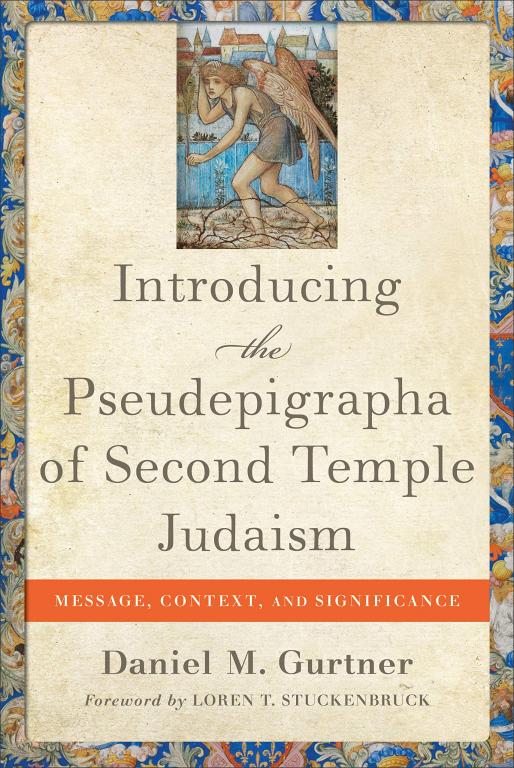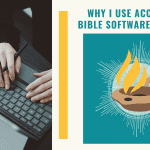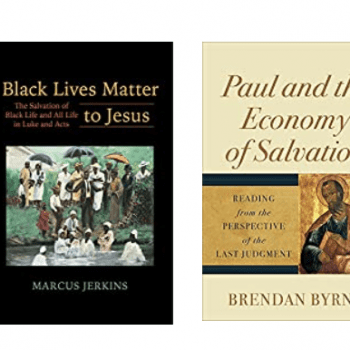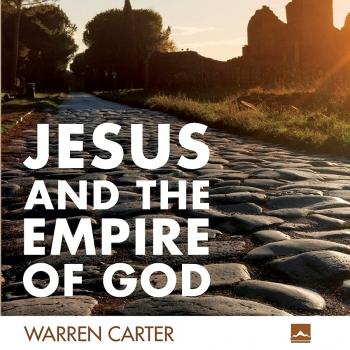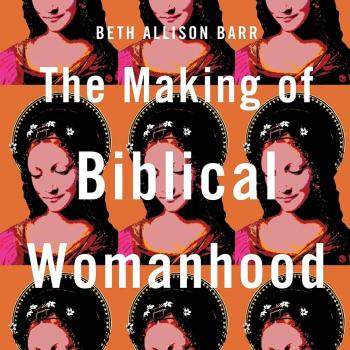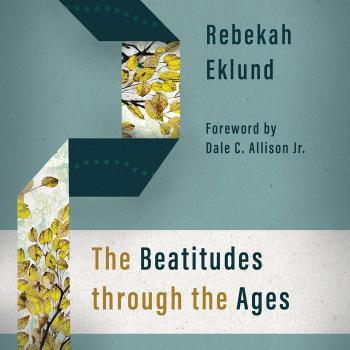Daniel M. Gurtner, Introducing the Pseudepigrapha of Second Temple Judaism: Message, Context, and Significance (Baker Academic, 2020).
Dr. Daniel Gurtner has written a helpful textbook on the Jewish Pseudepigrapha, a set of texts of used and misused in New Testament studies. Learn more from Gurtner about his new book in this interview.
-
What is the Pseudepigrapha?
-
DMG: Generally, these are writings that celebrate some figure from Israel’s past. I say “generally” because this by no means accounts for them. Technically, the term “pseudepigrapha” refers to writings that claim to be written by one person but are in fact written by another. This too only partly accounts for the facts, and also casts an unnecessarily pejorative light on the texts. So, how does one determine whether something is a “pseudepigrapha”? That’s complicated. Typically these writings are not classified by what they are, but what they are not. They are not generally found in the Greek writings in the major codices which do not have corresponding Hebrew Bible texts (i.e., the “Apocrypha”), nor are they among the Dead Sea Scrolls, Philo, Josephus, or the rabbis. But here again there are exceptions to these rules.
-
Perhaps returning to my general comment above, they may utilize the narrative significance of figures such as Abraham from the Hebrew Bible, and recast his life and experience into a new setting, as one finds in the Apocalypse of Abraham. In this way Abraham, as well as other figures like Moses, Job, Enoch, Baruch, etc., are pressed into service in a new setting by Jews who recognized the significance of these figures and utilized their respective prominence to relate their own message(s) based on something from that figure’s past. The ones I examine in my book are Jewish and date prior to the Bar Kochba revolt (ca. 135 CE). There are many that are Jewish but date later, others that are Christian, and still others that are Jewish in origin but in the course of their transmission by Christians essentially become Christian texts or in some way render the Jewish original inaccessible. Among the fundamental problems in studying these writings for those not deeply familiar with the scholarly discourse is discerning which writings belong to which contexts. For the student of the New Testament, the problem becomes: which ones are suitable for use as Jewish “background”?
Why should students of the New Testament be interested in the OT Pseudepigrapha?
DMG: At the outset I want to clarify that while my book is intended to be useful for interpreters of New Testament texts, it is primarily about the Pseudepigrapha themselves. That is, I did not write it so that one can understand the New Testament better by use of the Pseudepigrapha, but so that the Pseudepigrapha can be better understood in their own contexts. In my view, this is prolegomena to any secondary usage of this material, whether for Old Testament, New Testament, rabbinic Judaism, or some other context.
So, why read and study the OT Pseudepigrapha? First, I think people teaching these subjects may find this book useful for themselves. It is difficult for those teaching in early Christianity to delve into the depths of technical studies on an obscure aspect of Second Temple Judaism. Part of the aim of my book is to furnish readers – teachers and students – with a robust point of entry. This is suitable for those teaching New Testament, but also early Judaism, Rabbinics, or any related field. Second, I think students can gain an appreciation for just how diverse Judaism was in antiquity. Reading the Aramaic Levi Document is quite different from the Sibylline Oracles, which is itself quite distinct from the Book of Jubilees. All have different purposes, emphases, and features, and help students to recognize the complexities exhibited by one subsection of Jewish primary sources from antiquity. Legend has it that Martin Hengel used to say, “If all you know is the New Testament, you don’t know the New Testament.” His point was that the literary context of the New Testament is a vital component of understanding the New Testament itself. Third, for scholars who research and write in New Testament, there is a tendency to treat Second Temple texts in general, and those classified as Pseudepigrapha in particular, in a rather monolithic way as “background” to the New Testament. But these texts were not written as background; they conveyed the ideas of real people in real contexts, and should be understood as such prior to any secondary usage as background to NT or anything else.
There are plenty of examples that could illustrate their significance. Among my favorites is the “Son of David” in the Psalms of Solomon, chapter 17. Psalm 17 recalls God’s promise of David’s kingship to his descendants (17:4). But Israel’s sins have caused “sinners” to rise up against it and establish a monarchy (Hasmoneans) while despoiling the throne of David in arrogance (17:5–6). But God raised a man “alien to our race” (i.e., the Roman gentile Pompey) who hunted them all down to bring about judgment on them (17:7–10). This “lawless one” (Pompey entered the Holy of Holies; cf. Pss. Sol. 2:2; Josephus, J.W. 1.7.6 §152; Ant. 14.4.4 §72) laid waste to the land and expelled its inhabitants (17:11–13), doing in Jerusalem what gentiles do for their gods elsewhere (17:14). Even the Israelites living among the “gentile rabble” adopted these practices (17:15). The pious did not remain in Jerusalem but fled to the wilderness (17:16–17), while the wicked in Jerusalem continued to practice their iniquity, appointing commoners to leadership and criminals to rule (17:18–20). The psalmist then implores the Lord to raise up the king, the son of David, to rule over Israel, asking him to destroy unrighteous rulers and purge Jerusalem of gentiles (17:21–24). He will cause nations to flee and gather a holy people (17:25–26). He will not tolerate unrighteousness among them and will distribute them upon the land (17:27–28). He will judge the peoples and have the gentile nations serve him (17:29–30a). He will purge Jerusalem and make it holy, and nations will come from the ends of the earth to see its glory (17:30b–31). The Lord Messiah will be a righteous king, and his strength will come from hope in God (17:32–34a, 37–40a). He will be compassionate to the nations that revere him and bless the Lord’s people (17:34b–35), while he himself will be free from sin in order to rule well and drive out sinners (17:36). He will shepherd the Lord’s flock in holiness and discipline the house of Israel with pure words (17:40b–43). The psalmist concludes by pronouncing a blessing on those born in that day, asking God to deliver Israel from the pollution of profane enemies, and acknowledging the eternal kingship of the Lord (17:44–46). This obvious reminds readers of the ascription of “Son of David” to Jesus, in the Gospel of Matthew (Matt 1:1, 20; 9:27; 12:23; 15:22; 20:30, 31; 21:9, 15; 22:42), where there are kingly overtures drawn from 2 Sam 7, but nothing of the violence or militarism espoused by the Psalms of Solomon, which date between 63 bce and the turn of the era. It gives us a window into the kinds of messianism which were in circulation even before the birth of Christ.
What inspired you to write this book?
DMG: In addition to the comments made above, my interest in the subject came from my own ignorance. In my own work I found that I knew very little about this category of material, and soon realized I was not alone. I also knew about the excellent book on the Apocrypha by David DeSilva and thought there could be a companion one for the Pseudepigrapha. My book is to some degree like that, yet it is intended to be a bit more technical since the nature of this literature in general and the specific problems raised by the respective texts in particular tend to be more complex. I really wanted to dig into these texts to have a degree of first-hand expertize in them myself. As a New Testament scholar, I want to be sure I use all my materials as responsibly as possible. And it is very easy to make use of this material for NT interpretation without really understanding it on its own terms. So my book was to fill a void in my own thinking and hopefully do the same for others. There is also a general cloud of ambiguity about what exactly the Pseudepigrapha are, and while the very nature of the subject matter precludes the degree of clarity we may want, I hope to take readers some way in broadening their understanding.
Did you discover anything that surprised you?
DMG: Not really surprised me, but a great deal that intrigued me. One of the main burdens of the book is to help readers – beginning with myself! – gain an appreciation for the context and setting of these diverse texts. I think the diversity is the aspect that most intrigues me. There are texts that are steeped in the OT and focused on very particular concerns related to it, while others largely draw from diaspora contexts where Gentile genres are used with a smattering of Jewish figures and ideas brought in. Another thing that intrigues me is the manner in which one can see disagreements among differing groups of Jews emerge over what may seem to use to be petty issues. Calendar was a big issue – a solar or lunar calendar. And, while we may think that that Jewish Maccabean revolt that overthrew the Gentile Seleucids would be a great thing for most Jews, subsequent generations had real misgivings about the legitimacy of the Maccabean descendants, the Hasmoneans, on the throne and in the high priesthood.
What are some common misuses or misconceptions of the OT Pseudepigrapha?
DMG: There are many, especially among students of the New Testament. A few myths that come to mind are:
-
They are always falsely attributed and that there is a de facto intent to deceive readers about the real authors.
-
That they are a coherent set of texts, almost like a “canon” of texts enshrined in the Charlesworth volumes. Yet they are seldom preserved together in any single manuscript in antiquity and they depict views that sometimes overlap while at other times contradict others. One gains from these texts an appreciation for the diversity of Judaism at the time. Interpreters really cannot responsibly make claims about what “the Jews” believed without some qualification about which Jews are in view, and what documents are under consideration.
-
Among more critical scholars, there’s often a de facto assumption that since pseudepigraphy was accepted in Judaism, it was surely practiced among Christians. I find that among the Jewish pseudepigrapha there is very little if any concern to determine the actual authors of documents, as that seems to be relatively unimportant. Yet among early Christians authentic authorship, especially apostolic authorship, seems to be a pretty big deal. I’ve not (yet?) developed this further, but there is a distinction between how the practice was received in differing contexts that needs to be considered.
-
Finally, I find that students frequently presume these texts share our interests. For example, what is their view of salvation? Many texts have little or no interest in a notion of life after death in a heavenly existence. What did they expect of the messiah? Again, only some texts touch on the subject. The important thing is to allow the text to raise its own concerns, and understand it on its own terms before asking questions of it that it may or may not intend to answer. This is a useful outlook for the study of any ancient text, including the New Testament, but especially ones that are in some ways so foreign to us.
Buy the Book

